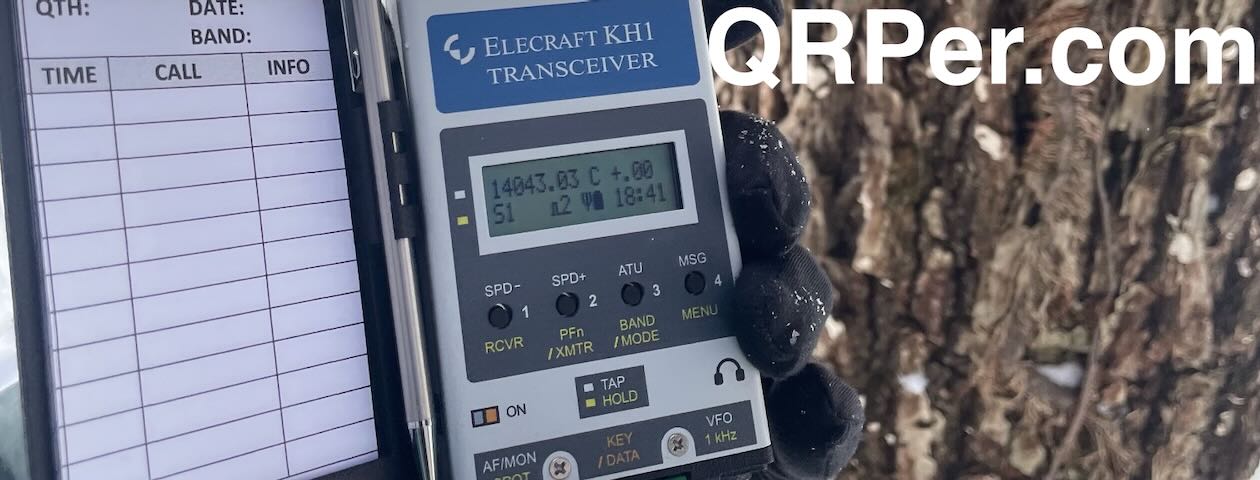(This article is full of educational and fun links – click on as many as you wish)
Antenna tuning on Superb Owl Sunday
by Vince (VE6LK)
While many in North America were watching a number of Superb Owls move a pigskin around a playing field, I was off to play radio, successfully, for the first time in weeks. This is part of my goal to activate 200 CW POTA contacts per month this year.
During recent visit to Vancouver attempting to operate from within my hotel room, and utilizing the Edisonian Approach, I was shown -more than once- what did not work. This will no doubt be a discussion point on an upcoming Ham Radio Workbench Podcast. I was therefore in very bad need to get back on the air while operating portable. I was close to feeling twitchy and in need of some POTAXXIA (Hyperradio Moduzolium). A plan was needed!
My goals were to trim out a new-to-me EFHW (thanks VE6VID), and make some contacts while operating outdoors. The weather was forecast for 50F, but turned out to be unexpectedly windy. Also, when the wind comes off the Canadian Rockies in Southern Alberta, it cools the area where I’d be (downwind), so a choice of operating location was key. I love going to this park for the moment that you drive west along Highway 533 and come around the corner as you see here in this short video.
Chain Lakes Provincial Park (VE-1168) is located between the Porcupine Hills and the Rockies on Highway 22 (locally known as the Cowboy Trail) in Southern Alberta, about 90 minutes south of Calgary. It’s especially gorgeous at sunrise and sunsets. A campground, lake with boat launch and a day use area all adorn this park created for water management with an earthen dam. While it is in a valley, the wind can be howling on some days. On this day it would prove to be just above a nuisance, sort of like mosquitos in the spring -you can live with the nuisance, but only for so long before you blow a proverbial gasket.
Short video – beautiful site and babbling brook
I located a lovely spot below the dam -and the majority of the wind- however it was outside of cellular range. I’d need to rely on the Reverse Beacon Network to spot me. The RBN will, in turn, post your spot to the POTA website once it hears you if you schedule your activation in advance.


The place I found would only be more perfect were it warmer than 45F and without wind. A babbling brook was by the picnic table, and a nearby footbridge had built-in supports for my painter’s pole that would serve as the far end support. I’m pretty sure that they weren’t intended for me specifically, but they were the perfect size to simply slide the pole into place and hold it firmly. By luck I parked the truck the correct distance away with it’s drive-on mount and 28′ Fibreglass Flagpole from Flagpoles-To-Go via Amazon. Continue reading VE6LK: Antenna tuning on Superb Owl Sunday




























